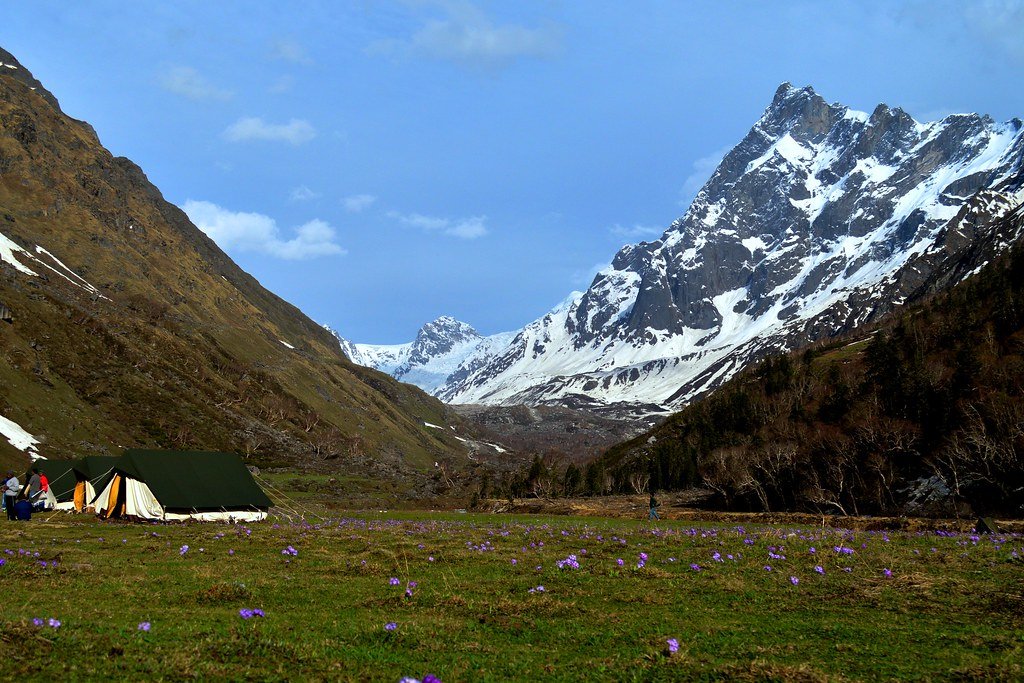Top 10 Places To Visit In Sanchi | How To Reach | Complete Tour Guide
Sanchi is an ancient Indian city located in the Madhya Pradesh state, in the heart of India. It is well-known for its rich history and cultural heritage, particularly for the UNESCO World Heritage site, the Sanchi Stupa. This ancient monument is a significant landmark that attracts thousands of tourists and history enthusiasts from around the world.
The Sanchi Stupa is an architectural marvel, constructed during the Mauryan Empire under the reign of Emperor Ashoka in the 3rd century BCE. It was built as a memorial for Buddha and serves as a testament to the religious and spiritual significance of the site. The stupa is adorned with intricate carvings and sculptures that depict various episodes from the life of Buddha, as well as other themes related to Buddhist teachings and symbolism.
In addition to the Sanchi Stupa, the site also includes several other monuments, such as the Ashoka Pillar, the Gateway of Toran, and various smaller stupas. These structures further highlight the cultural and historical importance of Sanchi as a center for Buddhist learning and pilgrimage.
Sanchi has been a subject of extensive research and study by archaeologists, historians, and art historians. The site has provided valuable insights into the art, architecture, and religious practices of the Mauryan period.

Best Places To Visit In Sanchi
Sanchi, located in the Indian state of Madhya Pradesh, is renowned for its ancient Buddhist monuments and is a UNESCO World Heritage Site. Here are the best places to visit in Sanchi:
1. Great Stupa:
The Great Stupa at Sanchi is a remarkable architectural marvel located in Madhya Pradesh, India. It is one of the most important and well-preserved monuments from the Mauryan period, dating back to the 3rd century BCE.
The Great Stupa at Sanchi is a hemispherical structure, measuring approximately 54 meters in diameter and 15 meters in height. It is built with bricks and covered with layers of stucco, which have been adorned with intricate carvings and sculptures. The stupa is surrounded by a circular railing, which is adorned with various sculptures and inscriptions.
The central dome is crowned by a series of parasol-like structures, symbolizing the protection and sanctity of the relics enshrined within. The base of the stupa is surrounded by a series of terraces, each adorned with exquisite carvings and sculptures depicting various scenes from the life of the Buddha and other religious themes. These carvings are considered to be some of the earliest examples of rock-cut reliefs in India.

2. Ashoka Pillar:
The Ashoka Pillar, located in Sanchi, is a significant historical monument in India that carries immense cultural and historical value. It is a well-known example of the Mauryan art and architecture, which flourished during the reign of Emperor Ashoka in the 3rd century BCE. The pillar is a testament to the rich heritage of the Mauryan Empire and stands as an emblem of Ashoka’s patronage of Buddhism.

3. Sanchi Museum:
The museum was established in 1919 by Sir John Marshall, an eminent archaeologist, to preserve and exhibit the valuable artifacts discovered during the excavations of the Sanchi Stupa. The collection includes a wide range of sculptures, such as those depicting the life of the Buddha, Jataka tales, and various other themes from Indian mythology and history. Additionally, the museum showcases a variety of architectural elements, including stone columns, capitals, railings, and inscriptions that provide insights into the craftsmanship and artistic styles of the time.

4. Four Gateways:
The Eastern Gateway at Sanchi is adorned with elaborate carvings that depict stories from Jataka tales and the life of Buddha. It is a testament to the exquisite craftsmanship of ancient Indian artisans. Similar to the Eastern Gateway, the Western Gateway features captivating carvings and reliefs that showcase Buddhist themes and narratives. Both gateways offer a glimpse into the rich artistic traditions of ancient India. The Northern Gateway is another architectural marvel at Sanchi, adorned with intricate sculptures that narrate episodes from Buddha’s life and teachings. Completing the quartet of gateways, the Southern Gateway exhibits detailed carvings portraying significant events from Buddha’s life and serves as a captivating example of ancient Indian artistry.

5.Buddhist Monasteries:
The Buddhist monasteries in Sanchi played a crucial role in the spread of Buddhism across India and beyond. These monasteries were not only places of worship and learning but also centers for the development of Buddhist art and architecture. The monastic complexes in Sanchi were built around the Great Stupa and comprised various structures, such as viharas (residential quarters for monks), chaitya halls, and meditation halls.

6. Udayagiri Caves:
The Udayagiri Caves, located near Vidisha in Madhya Pradesh, India, are an archaeological marvel that showcase the rich cultural heritage of the region. These caves, dating back to the 5th century, are an excellent example of early Indian rock-cut architecture and hold great historical significance. The Udayagiri Caves consist of a series of rock-cut monuments, including chaityas, stupas, and monasteries.

7. Heliodorus Pillar:
The pillar stands as a testament to the cultural and religious exchange between the Greeks and Indians during the ancient period. The inscription on the pillar is written in Brahmi script and Pali language. It is dedicated to Vasudeva, a deity associated with the Hindu god Krishna, and describes Heliodorus as a devotee of Vasudeva. The significance of the Heliodorus Pillar lies in its representation of the syncretism between Greek and Indian cultures.

8. Great Bowl
The Great Bowl of Sanchi is an iconic artifact that has captured the imagination of historians, archaeologists, and art enthusiasts alike. This ancient artifact is a testament to the cultural, political, and artistic achievements of the Mauryan Empire in ancient India. In this essay, we will delve into the history, significance, and features of the Great Bowl of Sanchi, while also highlighting the authoritative references that have contributed to our understanding of this remarkable piece of history.

9. Bija Mandal
The Bija Mandal Sanchi site holds immense historical importance as it was a major center for Buddhist learning and pilgrimage during the Mauryan period (322-185 BCE). The famous Sanchi Stupa, one of the most significant structures at the site, was commissioned by Emperor Ashoka, a devout Buddhist, in the 3rd century BCE. The stupa served as a symbol of his commitment to promoting Buddhism and spreading the message of peace and non-violence. Bija Mandal Sanchi boasts a variety of architectural wonders, including the Great Stupa, which is encircled by a series of Ashoka pillars and intricate stone sculptures. The stupa’s dome-shaped structure is adorned with ornate carvings depicting various Buddhist themes, such as the life of the Buddha, Jataka tales, and the Wheel of Life.

10. Sonari Buddhist Stupas
The Sonari Buddhist Stupas in Sanchi, India, are a group of ancient monuments that hold immense historical and cultural significance. These stupas are believed to have been built during the Mauryan Empire, which flourished between 321 and 185 BCE. The Sonari Buddhist Stupas, located near the Great Stupa at Sanchi, are a group of smaller stupas that were also constructed during the Mauryan period. These stupas are significant for their intricate carvings and sculptures that depict various scenes from Buddha’s life. The stupas also contain relics of the Buddha, which make them important pilgrimage sites for Buddhists.

11. Satdhara Buddhist Stupas
The Satdhara Stupas, also known as the “Seven Stupas,” are believed to have been constructed during the Mauryan Empire, which ruled from 322 to 185 BCE. The Sanchi Satdhara Buddhist Stupas hold immense historical significance, as they are some of the oldest and most well-preserved examples of Buddhist architecture and art. They were built during the reign of Emperor Ashoka, who was instrumental in the spread of Buddhism throughout India and beyond. The stupas served as important pilgrimage sites for Buddhist followers and played a crucial role in the dissemination of Buddhist teachings and ideas.

How To Reach Sanchi From Delhi
- By Air: The quickest way to reach Sanchi from Delhi is by flying. You can take a flight from Delhi’s Indira Gandhi International Airport (DEL) to Bhopal’s Raja Bhoj Airport (BHO). The flight duration is approximately 50 minutes, and several airlines operate daily flights between the two cities. From Bhopal airport, you can hire a taxi or take a bus to reach Sanchi, which is about 46 kilometers away.
- By Train: Another option is to take a train from Delhi to Sanchi. There is no direct train from Delhi to Sanchi. However, you can take a train to Bhopal, the capital of Madhya Pradesh, which is well-connected to Delhi. The train journey from Delhi to Bhopal takes around 12-14 hours. Once in Bhopal, you can take a taxi or a local bus to reach Sanchi.
- By Road: If you prefer driving, you can rent a car or take a bus from Delhi to Sanchi. The road distance between Delhi and Sanchi is approximately 650 kilometers, and the journey takes around 10-12 hours, depending on traffic conditions. The National Highway 3 (NH3) connects the two cities, providing a well-maintained route for travel.
In conclusion, reaching Sanchi from Delhi is possible via air, train, or road. Each mode of transportation has its advantages and disadvantages, depending on your preferences, time constraints, and budget. It is essential to consider factors such as travel time, convenience, and cost before deciding on the best way to reach Sanchi from Delhi.
Trains From Delhi to Sanchi
To travel from Delhi to Sanchi, there are several train options available, each with different timings and fares. Here are some of the most popular train choices:
- New Delhi – Katni Junction SF Express (12186)
- Timing: Departs New Delhi at 12:00 AM and arrives in Katni at 5:45 AM
- Fare: Sleeper Class (3AC) – INR 720, Second Sitting (2S) – INR 420
- New Delhi – Katni SF Special Express (12188)
- Timing: Departs New Delhi at 6:45 AM and arrives in Katni at 11:45 PM
- Fare: Sleeper Class (3AC) – INR 720, Second Sitting (2S) – INR 420
- New Delhi – Jhansi Shatabdi Express (12002)
- Timing: Departs New Delhi at 6:50 AM and arrives in Jhansi at 11:30 AM
- Fare: AC Chair Car (CC) – INR 1,410, AC 3 Tier (3A) – INR 2,260
- New Delhi – Bhopal Shatabdi Express (12021)
- Timing: Departs New Delhi at 6:00 AM and arrives in Bhopal at 12:45 PM
- Fare: AC Chair Car (CC) – INR 1,360, AC 3 Tier (3A) – INR 2,190
- New Delhi – Jhansi Intercity Express (12187)
- Timing: Departs New Delhi at 7:30 AM and arrives in Jhansi at 1:15 PM
- Fare: Sleeper Class (3AC) – INR 670, Second Sitting (2S) – INR 360
These trains running status may vary according to trains schedule, timing & availability. For accurate details you can visit official website of railway – IRCTC
Nearby Places To Visit:
Where Is Sanchi Stupa located
the Sanchi Stupa is located in the village of Sanchi, near the city of Bhopal, in the Indian state of Madhya Pradesh.



